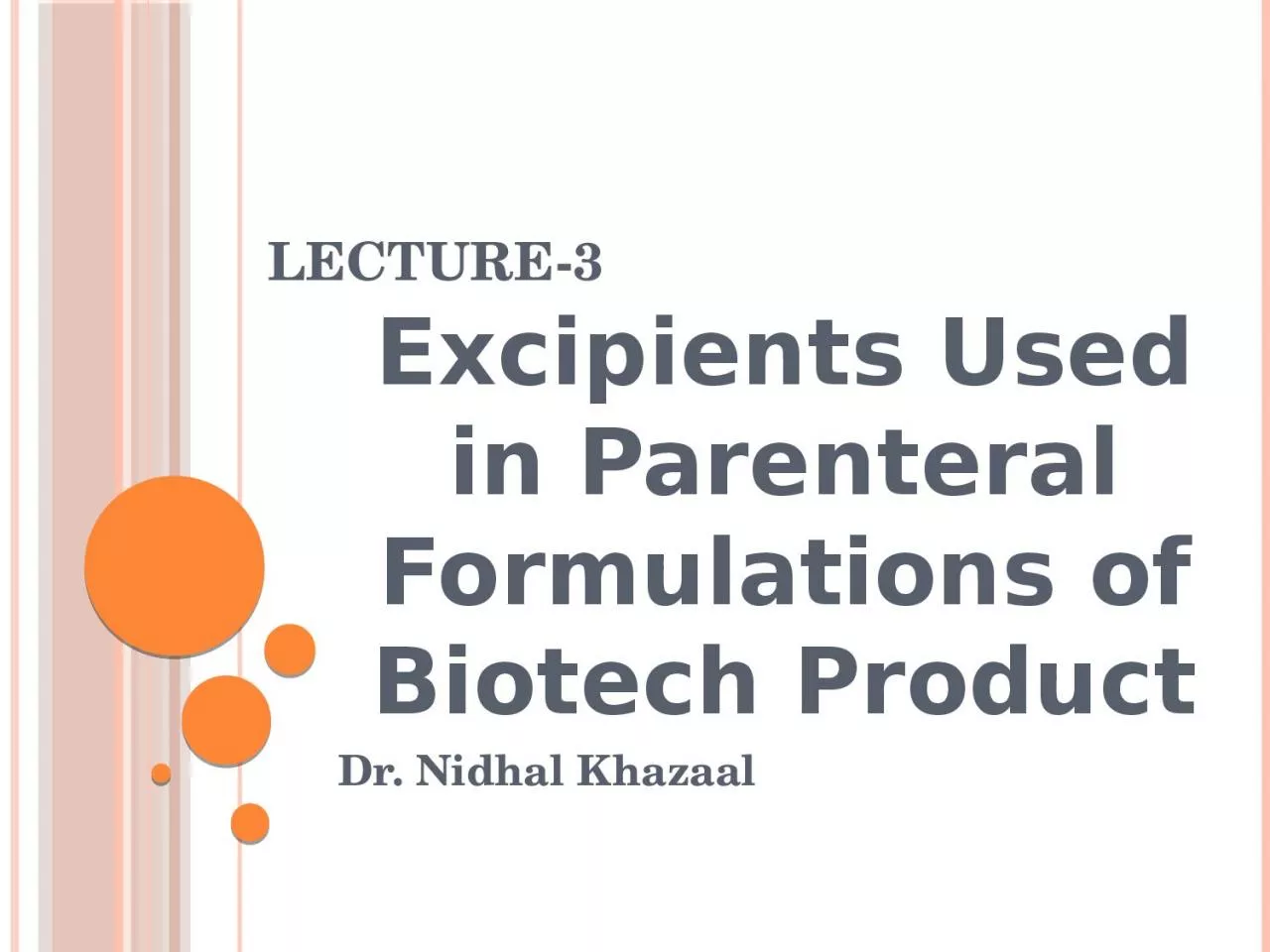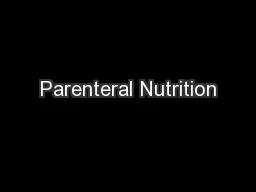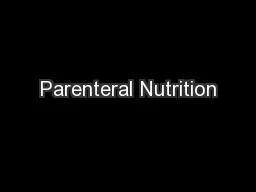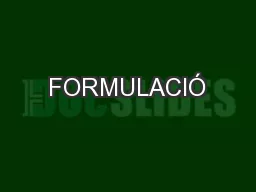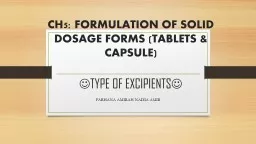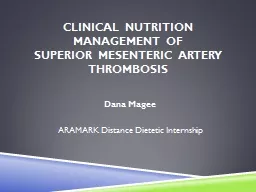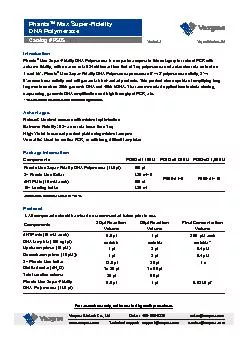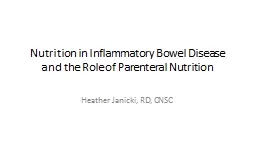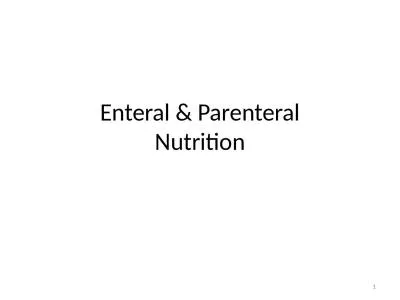PPT-Lecture-3 Excipients Used in Parenteral Formulations of Biotech Product
Author : adah | Published Date : 2022-06-28
Dr Nidhal Khazaal In a protein formulation active substance a number of excipients selected to serve different purposes This formulation design should be
Presentation Embed Code
Download Presentation
Download Presentation The PPT/PDF document "Lecture-3 Excipients Used in Parenteral ..." is the property of its rightful owner. Permission is granted to download and print the materials on this website for personal, non-commercial use only, and to display it on your personal computer provided you do not modify the materials and that you retain all copyright notices contained in the materials. By downloading content from our website, you accept the terms of this agreement.
Lecture-3 Excipients Used in Parenteral Formulations of Biotech Product: Transcript
Download Rules Of Document
"Lecture-3 Excipients Used in Parenteral Formulations of Biotech Product"The content belongs to its owner. You may download and print it for personal use, without modification, and keep all copyright notices. By downloading, you agree to these terms.
Related Documents

